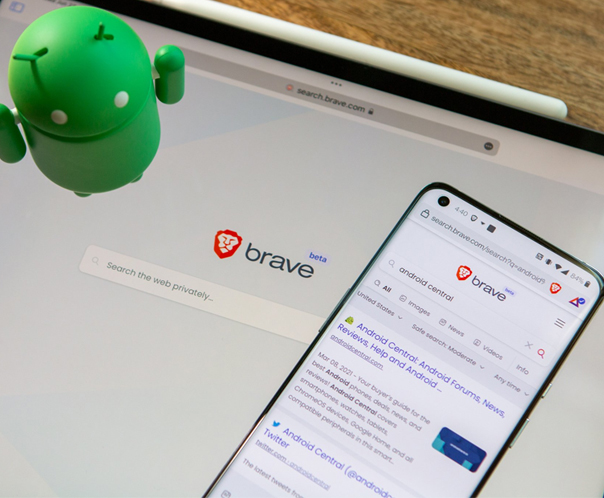Yes, it is a very big news to all. Now, Brave browser will redirect all the AMP links, webpages or URLs to publisher URLs by default.
The major aim of Brave browser so far is to visit the publisher’s URL not Google’s. Hence, Brave introduced the all the new feature called De-AMP which relieves AMP from Brave browser.
The De-AMP will get applied automatically from the version 1. 38 of Brave’s Android and Desktop browsers, and soon to be launched for iOS as it is in pipeline.
Brave and its team believe that the users will be more satisfied and secure without AMP, and also save them getting into any trouble or experiencing worse.
In an announcement, Brave quoted,
“AMP harms users’ privacy, security and internet experience, and just as bad, AMP helps Google further monopolize and control the direction of the Web.”
In other words, De-AMP will safeguard the user visiting AMP HTML and sending them directly to publisher’s webpage securely.
How this feature of Brave Works –
Brave’s De-AMP will counteract AMP in two major ways –
- It intercepts users from visiting AMP pages through rewriting links and URLs.
- It will keep the users aside from AMP pages or links before the page is rendered, which eventually helps impede the code from being implemented.
Through altering fetched pages, De-AMP will focus the displeasing URLs at the source. The example for the most repeated link to AMP pages is Google search results.
These forms of pages will be reconstructed within the browser for all AMP links redesigned or revised with the publisher’s URLs.
Taking it to an extent, Brave will not stop here and check for all the AMP HTML markup as pages are loading, and will load the publisher’s model of URL if it uncovers any sort of AMP markup.
In the future, Brave is planning to introduce the extended version of its already existing debouncing feature which detects when AMP URLs are going to be visited. It also redirects you to the publisher’s model of the page.
Why AMP Is Proved to be Disadvantageous (According to Brave) –
Brave’s logic for AMP being maleficent to users are –
Privacy:
AMP allows Google to look which pages user view on the web and how the pages got affected differently.
Safety:
All the users think they’re in touch with the publisher’s site when they’re still in control of Google.
Keeping it to Oneself:
AMP providing web content from Google’s servers. and on this, Brave argues that for coming days it’s Google’s dominancy on the web.
Potentiality:
Brave proclaims that AMP can actually make pages slower to load and more difficult to interact and enjoy good user experience.
Is there no longer any possibility left?
In recent times, the generality of AMP has declined dramatically due to endless exertion made by Google itself.
Taking an example, Google News now redirect users straight to publisher’s web links rather than AMP pages.
The Top Stories section in search results, which used to be only AMP, now consists of regular HTML pages.
Google even come to an end for accentuated AMP pages in search results with the special glowing bolt icon.
In different words, now the chances for landing on the AMP page is much lesser than in previous years, which makes this encountered as an untimely update for now.
At the end, it’s just one more nail in the coffin for a page technology that seems to be going down of the favour for all the pages out there.
We have tried explaining the recent update of Brave browser to make you all understand it in a better way with examples.
For more such updates, keep in touch with Maven Technology.




